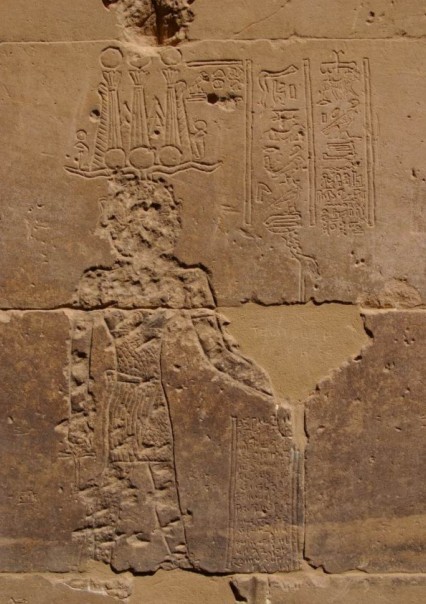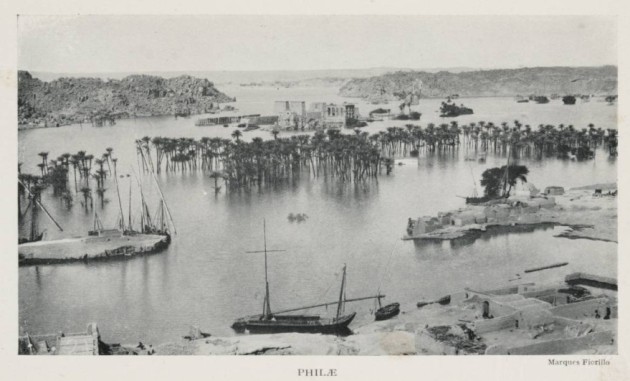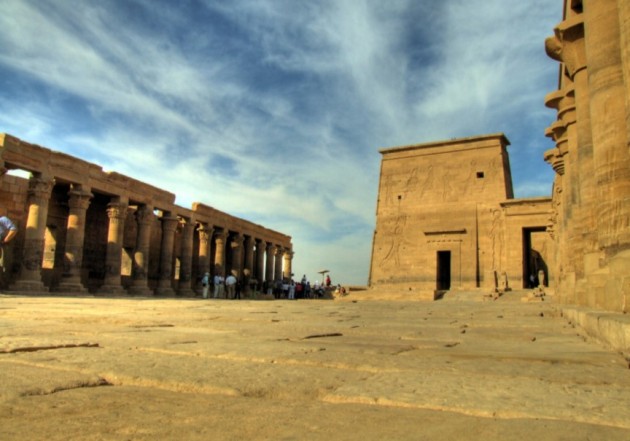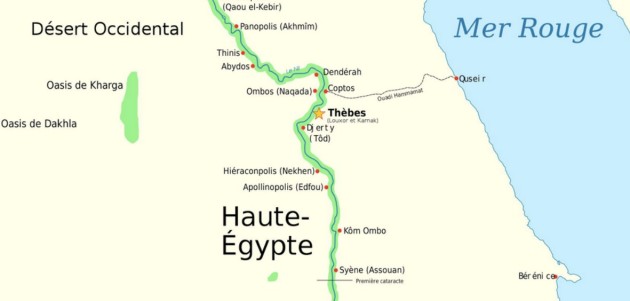In the field: religious mutations at Philae
For those considering religious transformations in the late period of ancient Egypt, the history of the Temple of Philae makes for compulsory reading. This temple of Isis and its religious complex is sited close to modern Aswan. Situated on a Nilotic island, the site is of interest to the historian on two scores: at the Southmost end of Egypt at the confines of Nubia, the temple, being the most spatially remote holds yet another record. Late in the Roman era it still exhibited practices the evolution of which diverges or seems to progress at a rhythm different from that observable in the rest of the country. It very much looks as if, in this remote river island, ancient pharaonic cults had endured never mind that, for the most part, the valley had adopted Christianity. These facts have been interpreted by some as the illustration of an ultimate resistance and seen in the Philae site the last bastion of paganism. This is overstating the facts.
Throughout the first millennium BC, pharaonic Egypt went through progressive cultural changes at varying speed, in fits and starts. Foreign invasions (notably Persian) had unsettled the country, weighing on mindscapes but without radically changing the culture for all that. The Hellenisation which spread about the country in the wake of Alexander's conquest had been prepared by centuries of (mostly trading) relations between Greece and Egypt. It contributed to the creation of a new society, endowed with “two heads” one thinking in Greek and the other in Egyptian. These two cultures for one country, resulted in an acculturation movement, multiple exchanges, diverse encounters, none of which would profoundly alter the pharaonic religion which was still extent in the hay day of Ptolemaic Egypt[3]. Great buildings were being erected; texts were being drafted. Then Egypt was integrated into the Roman Empire, which put paid to the Hellenistic kingships. Yet again, under Roman emperors, new temples were built, local gods venerated. This process of transformation of the Egyptian society can be observed over several centuries and the passage from traditional, in the event pharaonic, religion to the Christian religion was effected in this framework. This is not to say that Egypt passed unilaterally from Pharaoh's religion to that of Christ for Greco-Egyptian cults such as that of Serapis[4], Isiac cults[5], strictly Greek cults that all made up the religious landscape, must be taken into account.
When relying on archaeological bases to attempt to trace History in Philae, the situation is not as easy to gauge is it might appear at first. On site, where the visitor, or the archaeologist, accesses the temple in its “ultimate state”, one notable singularity commends attention: it holds the very last known hieroglyphic inscription. This is nothing less than the ultimate trace of a culture, which, associating hieroglyphics to a figurative mode of representation and a religious operation, had appeared at the end of the 4th millennium BC. If this hieroglyphic inscription can be classed as the “last known inscription”, it is for the simple reason that it can be dated and that to date there is none other to challenge its position. The inscription is adorned with a divine figure which was gouged out, that is deliberately destroyed. The text it carries can be translated thus: « Before Mandulis son of Horus, by the hand of Nesmeterakhem, son of Nesmeter, the Second Priest of Isis, for all time and eternity, Words spoken by Mandulis, Lord of the Abaton, great god. »

As such, the text is not precisely datable. The study of the epigraphy enables us to deduct that it dates to the Roman era: the hieroglyphics are a bit crude even if the traditional shape is easily recognisable. This rather rough graphic type was usual during the Roman era, when the priests[7] and scribes[8] who wrote this kind of inscription have sometime tended to draw hieroglyphic signs in a less harmonious manner than before. Taken alone, this inscription does not tell us much but the point is to make the connection with another inscription engraved just below the figure's arm and, interestingly, written in demotic[9]: « I Nesmeterakhem, the Scribe of the House of Writings of Isis, son of Nesmeterpanakhet, the Second priest of Isis, and his mother Escweret, I performed work on this figure of Mandulis for all time because he is fair of face towards me. Today, the birthday of Osiris, his dedication feast year 110 »
. Historians specialising in demotic language can figure that this date corresponds to 24 August 394 AD. The author refers to the figure of the god Mandulis alongside the hieroglyphic inscription, thus confirming its synchronicity with the latter. Unbeknownst to him, his inscription marks the last time that someone engraved an inscription in hieroglyphics.
It so happens that some decades later, still in Philae another person engraved a further inscription which in turn is considered the last known demotic inscription: « Smet the Elder, son of Pachoumios, the first prophet of Isis, his mother's name Tsensmet, the daughter of a chief priest of Isis. Smet the Younger, the second prophet of Isis, son of Harendotes. Today, 6 Choiak, year 169 »
. This date can also be fixed chronologically in the second quarter of the 5th century, and more precisely on 2 December 452. Therefore it refers to a period posterior to the adoption of Christianity as the official religion of the Roman Empire, as notably confirmed by Theodosius[10]' famous edict of 392. More interesting still is the fact that the dedicator has inscribed, elsewhere in the temple and in Greek this time, on 20 December 452, that is 18 days later, another inscription: « The proscynen[11] of Smetchem (= Esmet the younger), the protostolist[12] whose father is Pachoumios, prophet and whose mother is Tsensmet. I became protostolist in the year 165 of the Diocletian era (448 AD). I came here and carried out my function at the same time as my brother Smeto (= Esmet the elder), successor of the prophet Smet, son of Pachoumios, prophet. We give thanks to our mistress Isis and to our lord Osiris for a blessing today, 23rd day of Choiak 169 of the era of Diocletian »
.
Comparing the names of the dedicators, we observe that we are dealing with a similar onomastic formation and it is admissible to infer that these names represent a family of priests traditionally assigned to the cult of Isis in the Isle of Philae and still practicing the cult in the 5th century. The outstanding fact from a historical point of view is that we have here the last inscription in demotic tongue connoting a cult that Christian prescriptions termed “pagan”. Here ends, so to speak, a pharaonic history wedded to hieroglyphics as invented at the end of the 4th millennium BC (c. 3200 BC).










